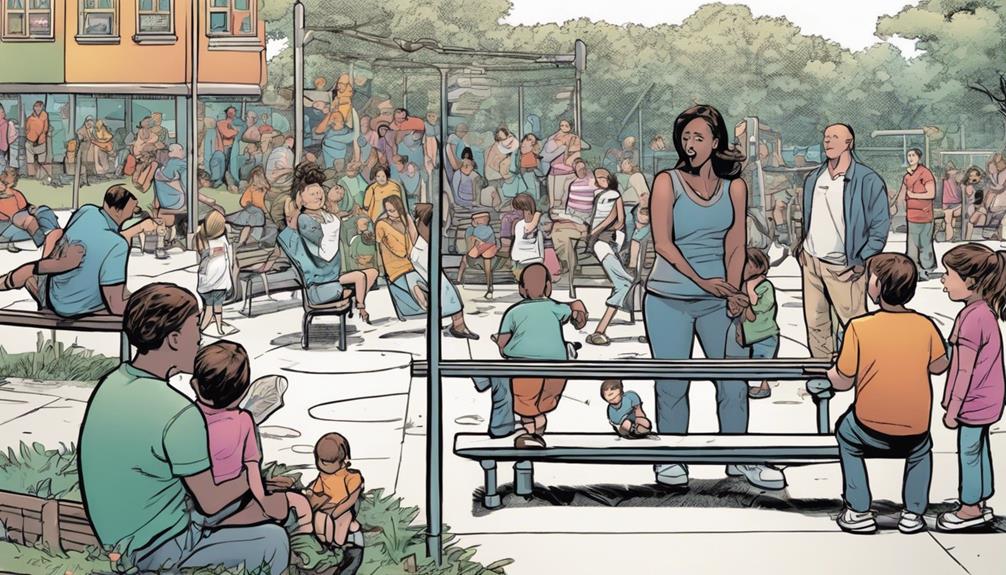During heatwaves, keep your baby cool by dressing them in lightweight, breathable clothes, using a hat, and ensuring the environment stays ventilated and shaded. During cold snaps, layer their clothing, include a cozy hat and mittens, and maintain indoor warmth with proper insulation or heating. Watch for signs of discomfort or dehydration, and stay alert to changing weather conditions. If you want to learn more about keeping your baby safe in these extremes, keep exploring practical tips and advice.
Key Takeaways
- Dress your baby in lightweight, breathable clothing during heatwaves and layer appropriately in cold snaps.
- Offer frequent feeds and hydration, adjusting for weather conditions, to prevent dehydration.
- Use sun protection like wide-brimmed hats and ensure shaded, cool environments during hot weather.
- Keep indoor temperatures comfortable with fans, air conditioning, or heating, and monitor for signs of discomfort.
- Regularly check your baby for signs of heat exhaustion or cold-related distress and adapt clothing and routines accordingly.

Extreme weather conditions, whether scorching heatwaves or freezing cold snaps, can pose serious risks to your baby’s health and safety. As a parent, it’s essential to adapt your caregiving routines to keep your little one comfortable and protected. One of the most effective ways to do this is by paying close attention to clothing choices. During hot weather, dress your baby in lightweight, breathable fabrics like cotton to prevent overheating. Avoid heavy or layered clothing that can trap heat and cause discomfort. A wide-brimmed hat can shield their face and neck from direct sunlight, reducing the risk of sunburn and heat exhaustion. On cold days, opt for layers that trap warmth but don’t restrict movement. A soft onesie under a cozy sweater, paired with a hat and mittens, can help retain body heat. Remember, you want to keep your baby warm without overheating, so choose clothing that’s easy to add or remove as needed.
Hydration is equally essential, especially during heatwaves. Babies can’t tell you when they’re thirsty, so it’s your job to make sure they stay well-hydrated. If your baby is breastfeeding, offer feeds more frequently, as breast milk provides hydration and critical nutrients. For formula-fed babies, prepare bottles with slightly increased amounts of water, but don’t dilute the formula—consult your pediatrician for guidance. In hot weather, keep a close eye on signs of dehydration, such as dry mouth, sunken eyes, or fewer wet diapers. Offer small amounts of water if your baby is over six months old, but always follow your doctor’s advice to avoid overhydration. Additionally, choosing nutrient-dense juices can help supplement hydration, but be mindful of sugar content and fiber loss compared to whole fruits.
During cold weather, hydration remains important, even if your baby isn’t sweating. Cold air can dry out their skin and mucous membranes, making them more susceptible to illnesses. Keep a humidifier in your baby’s room if the air is dry, and continue offering regular feeds to maintain hydration levels. In both heat and cold, maintaining a comfortable environment is essential. Use fans or air conditioning to keep the temperature regulated during heatwaves, and ensure your home is properly insulated and heated during cold snaps.
Ultimately, your awareness and quick adjustments to your baby’s clothing choices and hydration routines will help you navigate weather extremes safely. Keep monitoring the weather forecast, stay vigilant for signs of discomfort or distress, and trust your instincts. Your proactive approach guarantees your baby remains safe, healthy, and comfortable no matter what the weather brings.
Frequently Asked Questions
How Can I Tell if My Baby Is Overheating or Too Cold?
You can tell if your baby is overheating or too cold by checking their skin temperature and observing their behavior. Look for signs like sweating, flushed cheeks, or fussiness, which indicate overheating, or cold hands, feet, or lips suggest they’re too cold. Dress your baby in appropriate clothing for the temperature, and remember that good temperature regulation involves adjusting layers to keep them comfortable and safe.
Are There Specific Fabrics Best for Baby Clothing in Extreme Weather?
Imagine dressing your baby in fabrics so perfect, they might seem magical! For extreme weather, choose breathable fabrics like cotton or linen to keep your little one cool in heatwaves. In cold snaps, insulate with soft wool or fleece to trap warmth. These insulating materials and breathable fabrics work together to protect your baby from overheating or freezing, making sure they stay comfy no matter what Mother Nature throws at you.
How Often Should I Check on My Baby During a Heatwave or Cold Snap?
During a heatwave or cold snap, you should increase your monitoring frequency to guarantee your baby’s safety. Parental vigilance is key—check on your baby every 30 minutes to an hour, especially if they’re sleeping or dressed lightly. Keep an eye out for signs of distress, such as sweating, shivering, or fussiness. Staying attentive helps you promptly address any signs of discomfort or danger, keeping your little one safe in extreme weather conditions.
Can Outdoor Activities Be Safe for Babies During Weather Extremes?
Oh, sure, taking your baby outdoors during weather extremes sounds like a fantastic adventure—if you enjoy sunburns and frostbite! In reality, you should prioritize sun protection, like hats and shade, and dress your little one in appropriate outdoor gear. Wait for the weather to calm, and always keep a close eye on your baby. That way, you both stay safe and enjoy the fresh air without risking a trip to the emergency room.
What Signs Indicate My Baby Is Suffering From Heat Exhaustion or Hypothermia?
You should watch for signs of dehydration like dry mouth, sunken eyes, or lethargy. In heat, if your baby becomes sweaty, pale, or irritable, they might be suffering from heat exhaustion. In cold snaps, look for shivering, pale skin, or lethargy, which could indicate hypothermia. Use appropriate clothing insulation tips, like lightweight, breathable fabrics in heat, and layering in cold weather, to help keep your baby safe.
Conclusion
Remember, you’re the captain steering your baby through weather’s wildest storms. Whether it’s a scorching heatwave or a freezing cold snap, your vigilance keeps them safe like a lighthouse guiding a ship through fog. Stay alert, keep them dressed appropriately, and guarantee they stay hydrated and warm or cool as needed. With your steady hand, you’ll help your little one weather any storm, turning challenging weather into just another chapter in your journey together.










